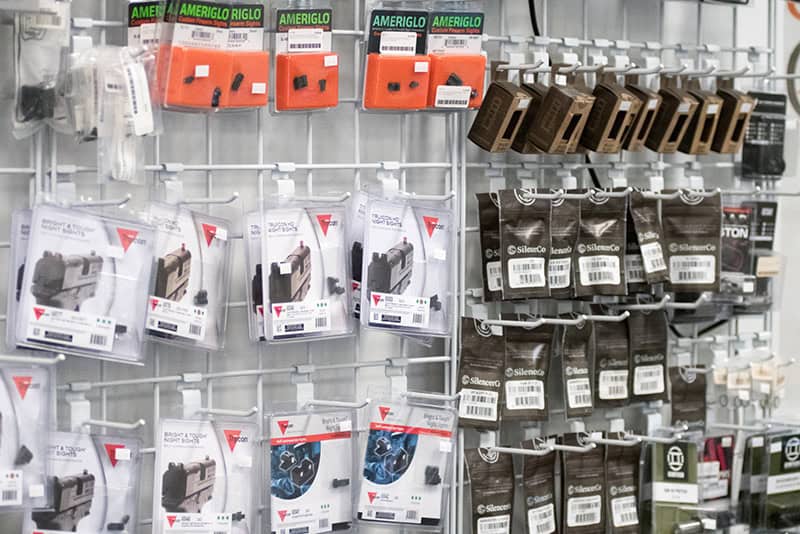Wring More Profits From Your Merchandise
Editor’s Note: The following classic article appeared in the March 1988 issue of SI. While it’s near-universal stores are “computerized” today (thankfully!) there are some useful inventory-stocking tips here. Point #7 rings true, regardless of the market you’re in. — JM
It’s easy to overlook one important source of more profits for your store. Better control of inventory!
No doubt about it. All the advertising and promotion in the world won’t bring more profit to your company if your inventory isn’t doing its job.
It’s an important topic, because inventory usually makes up more than 30% of the total assets of a small store. So handling it better brings “more bang for the buck” than do many other techniques.
How can you wring more profits from your inventory?
Let’s take a look at some tried and true ways. These techniques have been used by retailers across the country.
1. Delete Slower-Moving Items
On the average, retailers like to turn their stock of inventory about once every two months. In other words, if some item is staying on your shelves longer than 60 days, you should take a hard look at it. Does the customer really want it? Is there a way you can order smaller quantities?
The question is a vital one, because if your store gets too many of these slow-moving items, you are in essence financing their storage on your shelves. Short term debt is costly to a business like yours. Let’s say you are paying the prime rate to your local bank for short term loans. That’s about 9.5% today.
Multiply that percentage times the amount of slow-turning item on your shelves, and you’ll get a picture of what you are paying each year just to store that merchandise!
Sometimes it’s difficult to determine which items are moving slowly, especially if your store is not yet computerized. So one commonly used technique is to look for those items that are obviously moving slowly. Perhaps you have a certain department where items remain on hand for longer than half a year. That means they are turning less than twice annually. These are the most expensive items, and they should be sold at discount prices to remove them from your stock. That will free up cash that can be used for other purposes.
Now, there is an exception to this rule, and that is if the slow-moving item is really one that a few of your best customers desire strongly to acquire. The idea here is the items become “loss leaders” which bring customers to your store where they purchase other items as well.
But don’t use that as an excuse to avoid tackling the problem of slow-moving items. Really ask hard questions about those items before deciding not to remove them from your stock. Do they result in significant sales of tie-in items? Do you really need the amount of back-up stock in those items you currently have on hand?
2. Put “Demand Merchandise” In The Back Of The Store
Here’s a way to increase your revenues and profits without changing the amount of inventory you have on hand. Divide the primary categories of merchandise at your store into two broad groups. The first is what might be called “demand merchandise.” The second might be called “impulse merchandise.”
“Demand merchandise” refers to those items that customers come to the store specifically to purchase. They are generally higher ticket items that few people would purchase “on impulse.”
These items should be displayed toward the back of the store. That’s because they will draw people through the aisles to the back of the store, in the meantime passing by all of the rest of the merchandise in your store. As your customers pass by all of this other merchandise, they will pick up additional items “on impulse.” Result? Total ticket of the sale increases!
3. Put “Impulse Merchandise” Toward The Front Of The Store
In this group are items that are really purchased by customers who had no intention of buying when they first came to the store.
These items have small price tags. The best place to display them is near the cash register, where the final sale is made. A good rule of thumb: the higher the “impulse” nature of an item and the smaller the price tag, the closer you should display it to the cash register.
4. Put Vulnerable Items In Areas Of High Visibility
Chances are, there is a minimum number of employees on your store floor at any one time. This is becoming more common with the decline in the number available people for part-time help.
With fewer store clerks comes great opportunity for shoplifters. Items that are shoplifted impact your profits, since your cost of inventory is higher.
While there are many ways you can combat shoplifting, one of the best ways is to position vulnerable merchandise in areas that are easily visible from the front of the store.
Stand at the cash register and look closely at the various aisles in your store. Which ones are most easily watched from your vantage point? The areas easily seen are the best places to put merchandise that can be easily stolen.
Identify easily stolen merchandise by size and price. The smaller the item, the easier it is to shoplift. And the higher its price, the more attractive it is to steal. So those items that are small in size and higher in price should be displayed in prominent places.
5. Watch For Empty Shelves
What does it mean when you walk down one of your store aisles and see an empty spot on one of your shelves? It means the re-order point was passed over. A new order for merchandise should have been placed some time back.
It also means there are bound to be some disappointed customers who come to your store for the item, only to find nothing on hand.
Disappointed customers don’t soon forget your store did not have what they wanted. They end up going to the competition for the item. If they find it there, they have a higher opinion of the store than yours. So they end up returning to that store in the future.
For stores that are not computerized, one solution is to initiate a program which uses cards to alert the owner merchandise needs to be re-ordered.
The program can work in many ways. One good method is to establish a number representing the re-order point for each category of merchandise in your store. When the remaining items reach this number, it’s time to place a new order with the vendor. There is still some merchandise left on the shelves by the time the replacement merchandise arrives.
To track how many items are being sold, a card is attached to each item. Customers bring the merchandise with attached cards to the registers. The cards are counted daily, so merchandise being depleted can be identified.
6. Establish “Good/Better/Best” Selections
Some retailers make the mistake of stocking only moderate-priced merchandise, or just low end, or just high-end merchandise. That’s fine if the local customer pool only comes from a single demographic category.
But for most stores, it’s far wiser to always have three choices for the most important merchandise. Low, middle and high-end goods in each category will give each customer the chance to trade off quality with price. The customer values your store for this selection and will come back for more.
This is particularly true for “demand” merchandise as described earlier. For merchandise particularly desired by customers, certain price points will necessarily be required. The case is different for “impulse” merchandise. Here, people are buying goods they did not necessarily want when they first came to the store. So they are generally less price-conscious. This means higher priced goods can be emphasized in this category, which translates into more profits for your store.
7. Find Out What Customers “Want” From Your Store
No doubt, there are many additional items you should be carrying on your shelves. What are they?
Check a variety of sources to get new ideas for merchandise that will bring about a greater return on your investment in inventory. Both trade and consumer publications have new ideas you can use.
And don’t overlook a vital source of insight: customers themselves!
Constantly ask customers what items they would like to see at your store that aren’t yet in place. This can be done at the cash register. Also position a small bowl near the register that invites customers to leave cards with suggested new items. Once a day, review these cards and see what likely merchandise should be ordered.





